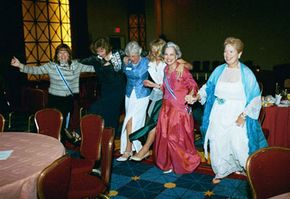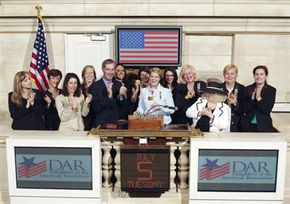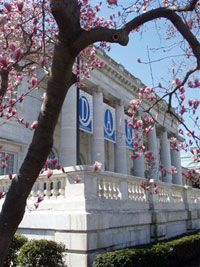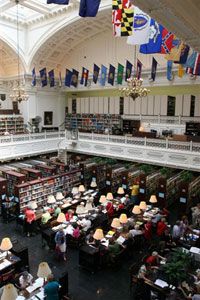Most Americans have a decent idea of when and how their ancestors ended up in the United States. For those whose roots date all the way back to the American Revolution, the historic war that earned the United States its independence from England, there is a special group that is dedicated to preserving and promoting the ideals that early Americans fought for -- the National Society of Daughters of the American Revolution, or DAR.
DAR has some pretty strict membership policies: Only direct female descendants of Revolutionary soldiers or participants in Revolutionary causes are eligible for membership. Additionally, the prospective member must be at least 18 years old, and -- the most controversial point of all -- must be approved by the individual chapter she is applying to join. Membership can be a grueling process in the genealogical research alone, and the question of personal merit has proven to be quite subjective in some famous cases of denied membership.
Advertisement
This exclusive organization has an interesting history. DAR was founded on Oct. 11, 1890, and was later incorporated by an Act of Congress in 1896. The organization's three main objectives are historic preservation, education and patriotism.
Who, exactly, were these Americans from whom DAR members are descended? The American Revolution took place in the latter part of the 18th century. Thirteen colonies fought to gain independence from the British Empire, resulting in the Revolutionary War from 1775 to 1783. The colonies penned the Declaration of Independence in 1776, and the war was finally won after many bloody battles in 1781. Those who fought in the Revolution were known as patriots. For membership purposes, DAR defines “patriot” as “one who provided service or direct assistance in achieving America's independence” [source: DAR].
If you do the math, you'll notice that DAR was formed nearly a hundred years after the American Revolution ended. So why was the group formed? After the wounds of the Civil War had begun to heal, patriotism burst back in full force, along with a desire to understand the beginnings of the country’s independence. Many women were pretty aggravated that they were excluded from male-only ancestry organizations, so they decided to form their own. Four women with a common bond of fathers or grandfathers who were patriots in the American Revolution created DAR with the intent to "perpetuate the memory and spirit of the women and men who achieved American independence" [source: DAR].
Headquartered in Washington, D.C., DAR is a nonprofit, volunteer, women-only service organization. Although you might assume that it is a politically motivated group (after all, the patriots certainly were), DAR does not lobby Congress or push a political agenda. The group does support strong national defense, but recognizes that individual members uphold various political beliefs.
In this article, you'll find out about the rigorous process of becoming a member of DAR, the benefits and rules of membership and much more.
Advertisement





